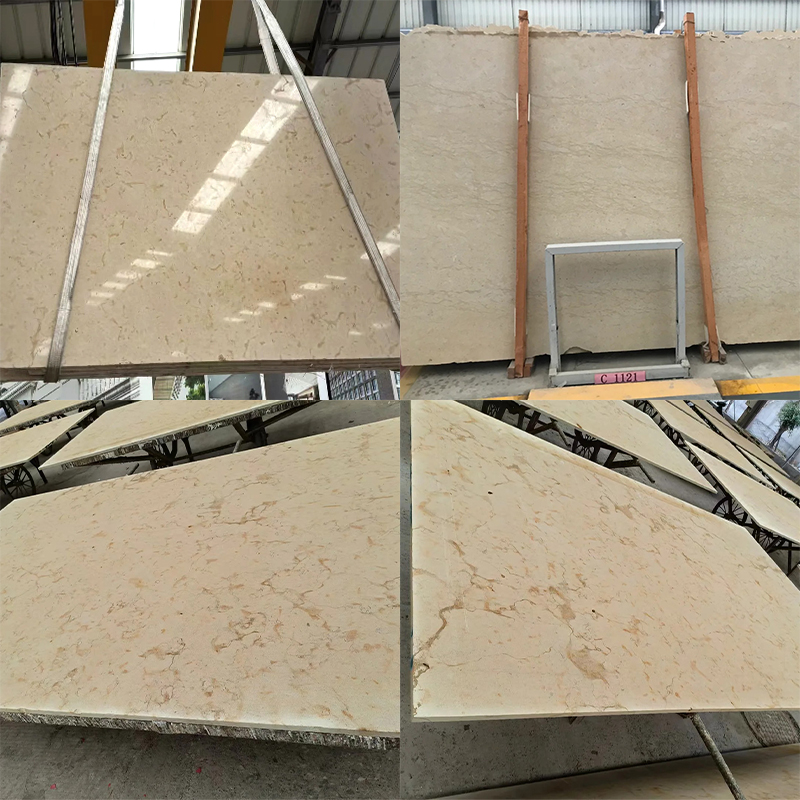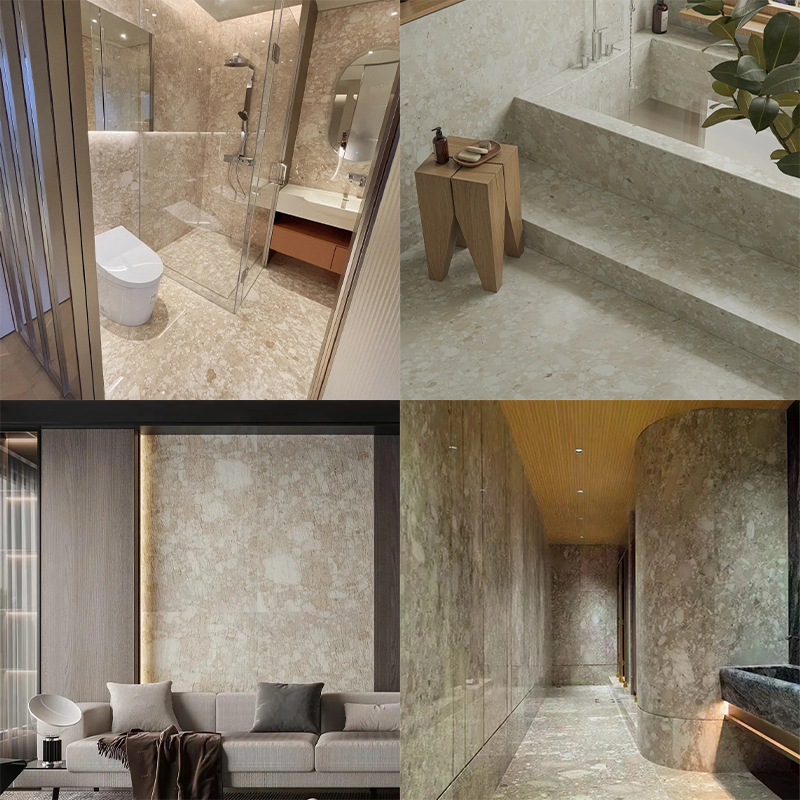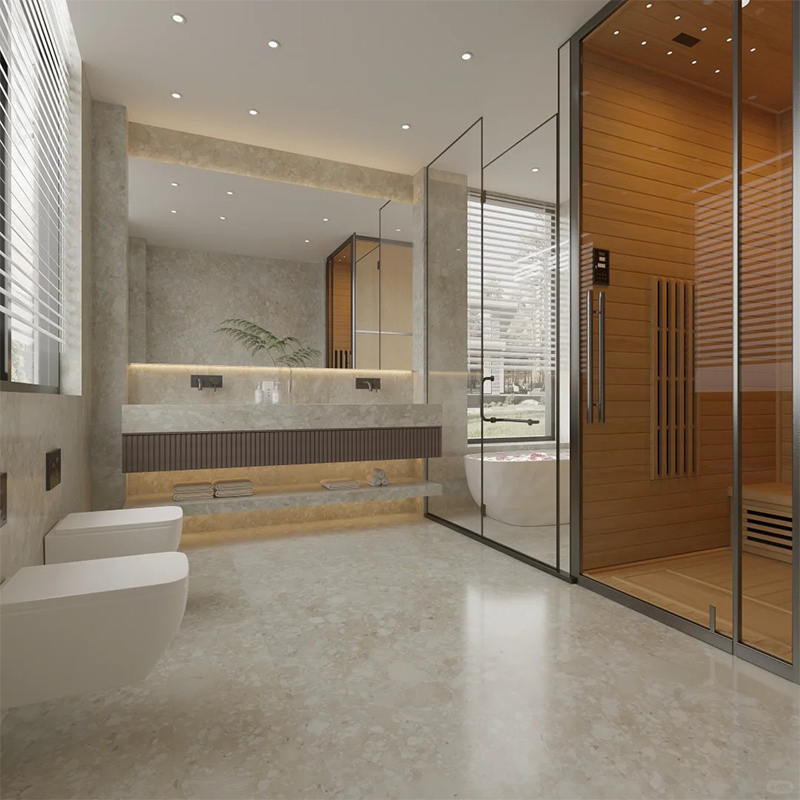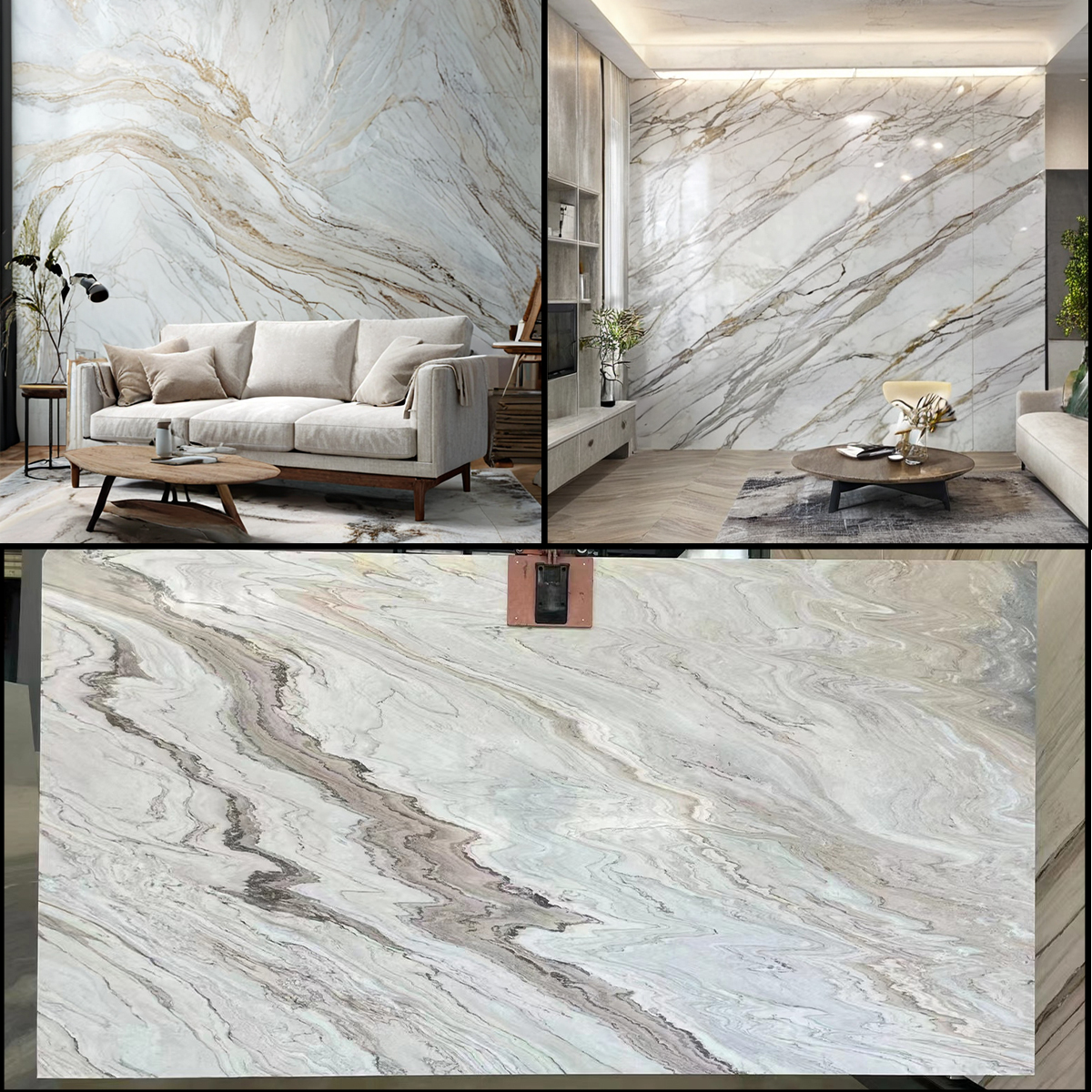For most modern projects, quartz wins on low maintenance and day‑to‑day performance, granite excels when natural character and heat resistance are priorities, and marble remains the benchmark for luxury aesthetics when clients are comfortable with patina and care. The best choice for your project depends on how the space will be used, the design language you are pursuing, and whether long‑term maintenance or visual impact matters more to your client.
Why this decision matters in 2025
Natural stone and engineered stone have moved from niche luxury to core materials in global residential, hospitality, and commercial design. Recent market analyses place the natural stone market at roughly thirty‑eight billion US dollars in 2025, with steady growth driven by luxury real estate, renovation, and infrastructure projects.

North America remains a key consumer region for granite and marble, while Asia‑Pacific is the fastest‑growing market, supported by rapid urbanization and large‑scale construction. Within this landscape, Future Stone Group operates as a vertically integrated supplier of marble, granite, quartzite, artificial marble, and quartz slabs for both projects and stone furniture.
For architects, designers, and contractors, the granite–quartz–marble decision affects not only aesthetics and performance but also project risk, client satisfaction, and lifecycle cost. Choosing correctly at the specification stage reduces callbacks, surface failures, and value‑engineering compromises later in the project.
Granite, quartz, and marble at a glance
Granite is a natural igneous rock quarried in blocks, cut into slabs, and finished for use on countertops, floors, walls, and exterior cladding. It is composed mainly of quartz, feldspar, and mica, giving it a granular, speckled appearance and good inherent strength.
Quartz surfaces are engineered slabs made from ground natural quartz bound with polymer resins and pigments under heat and pressure. The result is a dense, non‑porous material with highly controlled color and veining that does not require sealing.
Marble is a metamorphic stone formed when limestone recrystallizes under heat and pressure into interlocking calcite crystals. Its signature veining and soft luminosity have made it a symbol of luxury from classical architecture to contemporary villas and hotel lobbies.
Granite in depth: natural strength and character
Granite forms deep in the earth’s crust as molten magma cools slowly, allowing relatively large mineral crystals to grow and interlock. This crystalline structure delivers high compressive strength and good resistance to wear, which is why granite has long been used in both structural and decorative applications.
From a performance standpoint, granite offers strong resistance to scratching and mechanical abrasion in everyday residential and light commercial use. Edges and cutouts can still chip if struck sharply by heavy cookware or dropped objects, but surfaces generally perform predictably when fabricated and supported correctly.
Because granite is naturally porous, it will absorb liquids without protection, which can lead to staining from oils, wine, coffee, and pigments. Modern penetrating sealers significantly reduce this risk and can extend the time before a spill becomes a permanent stain, although they do require reapplication over time.
Granite’s heat tolerance is one of its strongest selling points: it can handle hot pots better than quartz and many other engineered materials, though fabricators still recommend trivets to avoid thermal shock. For serious cooking environments or outdoor kitchens in temperate climates, this resilience to heat makes granite particularly attractive.
Aesthetically, granite’s appeal lies in its natural variation—no two slabs are identical, and mineral movement, flecks, and tonal shifts tell the story of geological formation. This makes granite ideal where designers want visible natural character, especially in earthy or organic concepts for villas, resorts, and family homes.
Quartz in depth: engineered performance and consistency
Quartz slabs are typically produced from roughly ninety to ninety‑five percent crushed natural quartz combined with five to ten percent resins and pigments. During manufacturing, this mix is vibro‑compressed under vacuum and then cured, producing a dense, non‑porous surface with predictable properties.
The non‑porous nature of quartz means it does not need sealing and is highly resistant to staining from common kitchen and bathroom contaminants. This makes quartz especially attractive for busy families, hospitality environments, and rental properties where ease of cleaning and hygiene are critical.
In terms of scratch resistance, quality quartz countertops perform comparably to or better than many granites, comfortably handling daily use with cutting boards recommended for knives rather than surface protection. However, quartz is more sensitive to very high heat because the resin component can scorch, discolor, or crack if exposed to hot cookware directly from the cooktop or oven.
Design control is where quartz truly stands out: manufacturers can reproduce subtle marble‑look veining, ultra‑clean whites, concrete tones, or deep charcoals with remarkable consistency from slab to slab. This makes quartz an excellent choice for multi‑unit developments, large hospitality projects, and minimalist interiors where uniformity is part of the design intent.
Future Stone Group’s portfolio includes premium artificial marble and quartz slabs engineered to deliver the luxury look of natural stone with enhanced durability and lower maintenance. Some of these engineered collections are specifically developed to reduce or eliminate crystalline silica content, addressing emerging health concerns around fabrication dust while preserving high‑end aesthetics.
Marble in depth: timeless luxury and living patina
Marble begins as limestone that has been subjected to metamorphism, which recrystallizes the calcite into larger, interlocking crystals. This process produces a denser, more decorative stone with characteristic veining caused by traces of minerals such as clay, iron oxides, or organic material.

From a practical standpoint, marble is softer and more easily scratched than granite and quartz, and it is notably more porous. It is also chemically reactive with acids, so lemon juice, vinegar, wine, and many cleaning agents can etch the surface, leaving a matte mark even on sealed stone.
Despite these vulnerabilities, marble remains the reference point for luxury in kitchen islands, master bathrooms, boutique hotel lobbies, and feature walls. Iconic varieties such as Carrara, Calacatta, Arabescato, and dramatic stones like Calacatta Viola or Black Marquina are highly sought after by designers for their sculptural veining and depth.
Proper detailing and product selection can manage many of marble’s risks. Specifying honed finishes, selecting darker or more variegated stones in high‑traffic zones, and using professional anti‑etch treatments in critical food preparation areas all help preserve appearance over time.
Future Stone Group curates a wide gallery of premium marbles, including white, grey, beige, green, and deep black stones in slabs, tiles, waterjet medallions, and custom elements. These can be fabricated into marble kitchen countertops, marble bathroom vanities, marble staircases, and statement pieces such as marble dining tables and marble coffee tables for luxury projects.
Technical comparison: performance, maintenance, and cost
Durability and heat
In day‑to‑day durability, quartz and granite are generally the most robust options, with marble requiring more care. Quartz and granite both resist scratching under normal residential use, while marble is more easily marked by grit, metal, and heavy use over time.
Granite offers the best heat resistance of the three and can tolerate hot cookware better than quartz, which can suffer damage to its resin binders at high temperatures. Marble tolerates moderate heat but is best protected from extreme temperature swings to prevent thermal stress and discoloration.
Stain and chemical resistance
Quartz is effectively non‑porous and highly resistant to staining from oils, coffee, wine, and pigments when cleaned within a reasonable time. Granite, when sealed properly, shows good stain resistance, though lighter and more porous granites may need more frequent resealing.
Marble is the most prone to staining because of its porosity and is uniquely vulnerable to acid etching, which sealers cannot fully prevent. Professional impregnating sealers and surface treatments greatly improve stain resistance but should be paired with realistic user education about patina.
Maintenance and lifecycle
Quartz demands the least maintenance: no sealing and simple cleaning with mild detergent and water are usually enough. This low maintenance profile makes quartz especially appealing for high‑traffic residential kitchens, rental properties, and hospitality spaces.
Granite sits in the middle, typically requiring periodic sealing at intervals determined by stone porosity, color, and product type, often every one to three years. Routine care involves non‑abrasive, pH‑neutral cleaners to protect both the stone and sealer.
Marble is the most maintenance intensive, needing both regular sealing and careful product selection to avoid acid or abrasive damage. For luxury kitchens and bathrooms, it is common to combine marble in visually prominent zones with more forgiving materials in hard‑working prep areas.
Cost ranges
Current 2025 pricing varies by region, thickness, edge profiles, and stone grade, but broad installed price bands are well documented. Granite typically ranges from entry‑level commercial colors in the lower band to rare exotics at the top, with many residential projects in a mid‑market tier.
Quartz usually occupies a mid to upper band, with basic colors competing with standard granite and premium, large‑vein designs matching or exceeding the cost of upscale natural stones. Marble tends to sit higher overall, especially for famous white Italian marbles and rare colored stones used in luxury villas, hotels, and bespoke furniture.
When lifecycle costs are considered, quartz often delivers strong value where low maintenance translates directly into reduced cleaning and restoration work. Granite offers a durable, long‑term solution for many mid to high‑end projects, while marble delivers the highest perceived value in spaces where the design intent is explicitly premium.
Sustainability and health considerations
Natural stones such as granite and marble are fundamentally inert materials that do not off‑gas volatile organic compounds in normal use. Their environmental footprint is associated primarily with quarrying, block transport, and fabrication, which can be mitigated through responsible sourcing and efficient logistics.
Quartz and other engineered stones can incorporate recycled content and optimize slab yield, reducing quarry waste and enabling consistent production. However, traditional high‑silica engineered stone has drawn regulatory attention because of respirable crystalline silica exposure during fabrication, prompting demand for lower‑silica or alternative binders.
Future Stone Group addresses these evolving requirements with artificial marble and quartz lines that are engineered for premium look and improved safety, including zero‑silica quartz solutions. For architects and contractors working in jurisdictions with new regulations on engineered stone, partnering with a manufacturer that can document silica content and provide technical support is increasingly important.
Application‑driven recommendations
Luxury villas and high‑end residences
For flagship kitchens and master suites in villas or penthouses, marble remains the material that most clearly communicates luxury and craftsmanship. Feature islands in Calacatta or Calacatta Viola, paired with marble floor tiles and matching marble wall panels, create a fully integrated stone experience.

Designers often specify marble dining tables, marble coffee tables, and marble console tables as coordinated furniture accents that echo the architecture. In these contexts, clients are usually prepared to accept patina and invest in appropriate cleaning and maintenance routines.
Busy family kitchens and modern apartments
For family kitchens and contemporary apartments, especially in markets like the USA, Australia, Canada, and Northern Europe, quartz frequently offers the best balance of aesthetics and practicality. Marble‑look quartz slabs deliver the light, veined aesthetic clients love without the same sensitivity to staining and etching.

In multi‑unit residential projects and build‑to‑rent developments, quartz’s consistency and reduced maintenance demands can simplify handover and long‑term asset management. Future Stone Group’s quartz slabs and artificial marble ranges are designed to support these high‑volume, performance‑driven applications.
Hospitality, retail, and public spaces
In hotels, restaurants, and retail environments, material selection must balance impact with durability and cleaning regimes. Granite is a strong candidate for bar tops, buffet counters, and high‑traffic floors thanks to its abrasion resistance and heat tolerance.

Marble is often reserved for lobbies, reception desks, and signature washrooms, where its visual presence supports brand positioning. Quartz can be used strategically in back‑of‑house and food service areas where non‑porous surfaces and hygiene are priorities.
Future Stone Group’s portfolio includes not only slabs but also stone furniture, waterjet medallions, mosaic tiles, and integrated solutions for entrance halls and luxury lobbies. This enables cohesive material palettes across horizontal and vertical surfaces, as well as custom stone engineering elements such as staircases and feature walls.
Emerging markets and large infrastructure projects
In fast‑growing markets along the Belt and Road and across Asia‑Pacific, natural stone is increasingly specified for public buildings, transport hubs, and large residential communities. Granite and other durable stones are often preferred for exterior cladding, staircases, and public flooring because of their long service life.
For large‑scale, cost‑sensitive projects, Future Stone Group’s combination of source‑factory production, own quarries, and one‑stop stone engineering services helps control budget while maintaining quality. Engineered options such as artificial marble and quartz can be deployed in interior zones to deliver a premium feel at competitive cost and with streamlined maintenance.
Comparison table for quick reference
| Criterion | Granite | Quartz | Marble |
|---|---|---|---|
| Origin | Natural igneous stone composed mainly of quartz, feldspar, and mica. | Engineered surface made from crushed quartz, resins, and pigments. | Natural metamorphic stone formed from recrystallized limestone. |
| Appearance | Natural variation, speckles, and movement; each slab unique. | Highly consistent, with designs ranging from solid colors to marble‑look veining. | Classic veining and soft glow associated with luxury interiors. |
| Durability | Very good scratch and impact resistance, with some risk of edge chipping. | Excellent day‑to‑day durability and high resistance to scratches and impacts. | Softer and more easily scratched or chipped under heavy use. |
| Heat performance | Strong heat tolerance; still advisable to use trivets to avoid thermal shock. | Sensitive to high heat because of resin; trivets are essential. | Handles moderate heat but not ideal for repeated extreme temperature swings. |
| Stain resistance | Good when properly sealed; unsealed stone can absorb oils and pigments. | Non‑porous and highly resistant to stains without sealing. | Most prone to staining; requires prompt cleanup and regular sealing. |
| Chemical resistance | Generally robust, but strong acids or alkalis can damage some minerals and sealers. | Resistant to most household chemicals; avoid harsh solvents and abrasives. | Vulnerable to acid etching, which sealers cannot fully prevent. |
| Maintenance | Medium: periodic sealing and pH‑neutral cleaning. | Low: no sealing, simple cleaning regimen. | High: sealing, specialist cleaners, and acceptance of patina. |
| Typical role | All‑rounder for kitchens, floors, exterior elements. | Performance surface for modern kitchens, bathrooms, and commercial spaces. | Statement material for luxury kitchens, baths, lobbies, and furniture. |
How Future Stone Group supports better material choices
Future Stone Group is a source‑factory‑backed supplier with its own quarries and over a decade of professional stone production and manufacturing experience. This vertical integration allows tight control over block selection, slab processing, quality assurance, and logistics for both natural and engineered stone.
The company’s portfolio spans marble, granite, travertine, quartzite, artificial stone, and engineered quartz, complemented by tiles, pavers, wall panels, medallions, and furniture. Key categories for projects include marble countertops, quartz countertops, granite countertops, quartz slabs, granite slabs, natural stone slabs, and a full range of marble furniture.
For architects and designers, Future Stone Group offers one‑stop project services, from early design consultations and material sampling through to stone engineering, shop drawings, and installation guidance. The team can coordinate cross‑category packages—combining floors, walls, staircases, and custom furniture—to ensure a coherent stone story from entrance hall to luxury lobby.
Future Stone Group’s artificial marble and zero‑silica quartz lines provide additional options where regulatory requirements, health considerations, or performance specifications call for engineered alternatives to natural stone. This breadth of solutions means specifiers do not have to force a single material into every role; instead, they can select the right stone for each zone while preserving design intent.
How to brief your stone partner effectively
To get the best outcome from a supplier, your specification should go beyond naming “granite,” “quartz,” or “marble.” Clear information about use, traffic levels, cleaning regimes, and client expectations around patina will guide better material and finish recommendations.
When working with Future Stone Group, it is helpful to share layout drawings, edge profiles, cutout locations, and any requirement for book‑matching or vein‑matching. For furniture such as marble dining tables, marble coffee tables, console tables, or stone side tables, early coordination of dimensions and base details allows the team to optimize slab selection and reinforcement.
Discuss regional considerations as well, such as outdoor exposure, proximity to the sea, or strong sunlight, which may influence the choice between granite, quartz, and marble or suggest specific engineered solutions. In emerging markets with rapid construction schedules, leveraging Future Stone Group’s logistics, safe export packaging, and 24‑hour technical support can help keep complex stone scopes on program.
Choosing with confidence
There is no single material that is objectively “best” for every project, but there is always a best‑fit choice for each space and client profile. Granite suits clients who value natural variation and strong heat performance, quartz suits those who prioritize low maintenance and consistent design, and marble suits projects where luxury and expressive veining are central to the concept.
By understanding the technical strengths and trade‑offs of each material and partnering with a specialist producer like Future Stone Group, you can specify surfaces that perform beautifully and age with grace. Whether you are designing a private villa in North America, a hotel in the Middle East, or a mixed‑use development in an emerging market, Future Stone Group’s natural stone and engineered stone solutions are designed to help you deliver spaces that feel both timeless and distinctly contemporary.



